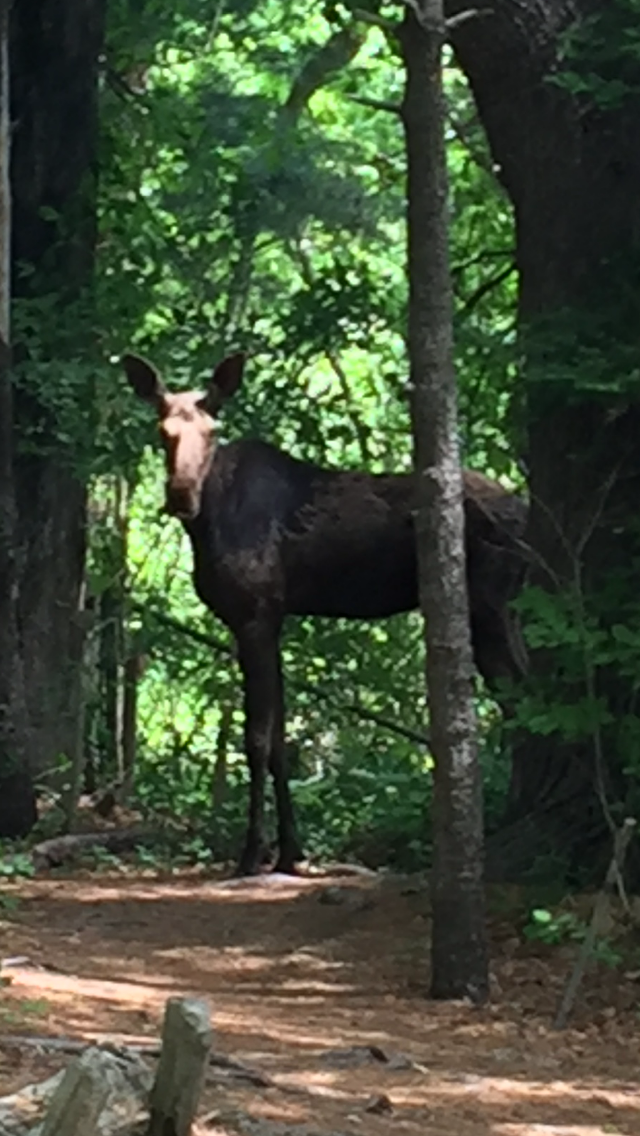Photo: The moose Wednesday. More to come? (Photo: Ann Rittenburg)
When John Maguranis answered his cell phone on Wednesday morning, June 2, he was a busy driving around Belmont Hill attempting to find a moose on the loose.
Belmont’s Animal Control Officer was working with a team from the state’s Environmental Police in tracking down a young female who took an early morning stroll from near the Charles River in Watertown up into Belmont via the roads adjacent PQ Park. The cow – that’s what you call a female of the species – would spend several hours galloping and hiding in backyards in Belmont until she reached the Habitat, the Massachusetts Audubon’s Education Center and Wildlife Sanctuary on Belmont Hill.
“Our best guess is she walked along the Charles from the western suburbs,” said Maguranis, who added that he had not heard of a moose in Belmont in any town records or from older residents.
“This is very rare,” said Maguranis, who said the state is looking to tranquilize the cow and transport her to a location in the western part of the state as a moose in an urban setting is a danger to herself and front seat occupants of vehicles if they wander into traffic.
In 2007, MassWildlife biologists estimate 850-950 moose live in Massachusetts, with the majority of them found in northern Worcester County.
Thursday’s stroll by the cow through Belmont became, for at least one day, a media sensation. All of Boston televisions stations and New England Cable News used short videos from Watertown and Belmont Police of the moose striding on streets in their reports. A photo of the animal taken by Belmont resident Anne Rittenburg garnered 550 likes, 207 shares and 33,200 views on the Belmontonian Facebook page. Comments and views of Belmont’s “Moose on the Loose” came from as far as Canada, California and Japan. The moose has its own Twitter account, Belmont Moose, with nearly 300 followers.
And while most people online and in broadcast reports were good natured about the moose’s walk about, Maguranis said the event had a serious undertone.
“The real story here is the effect of loss of wildlife habitat,” said Maguranis, who has spoken about the impact on native animals of expanding suburbs, in particular on the number of coyotes now residing in Belmont and inside Route 128.
Marguranis said that on average “40 acres of land is being developed each day, land that supports native wildlife.” When wild areas are turned into housing or commercial development, the new uses reduce or eliminate the land’s usefulness as a habitat for the other species that live there.
By moving into native habitat throughout the Route 495 corridor, wildlife is forced to seek food and shelter where it can. Belmont is an attractive location as it has protected conservation land – Lone Tree Hill, Rock Meadow – and is situated on the eastern end of the Western Greenway Trail that runs through neighboring Waltham to Route 128.
“It’s not so much that a moose came to Belmont [Wednesday], it was that it didn’t happen sooner,” he said.








Leave a Review or Comment